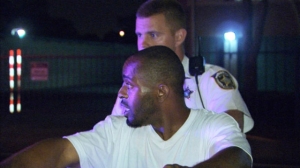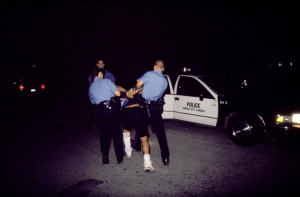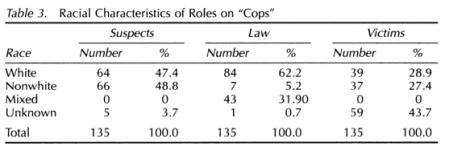Social media is a huge part of our culture today that allows people to participate in an active dialogue about multicultural issues. Often times, users find like-minded people on the sites who share their point of view. In this way, we start to see the creation of counter-public spheres on social media sites.
The public sphere is the space in which individuals can discuss problems within a community and work towards social change. Counter-publics are groups of marginalized people formed by their conflict with the norms and values of the dominant culture. Therefore, a counter-public sphere is the venue for marginalized populations to examine problems that are unique to them away from the dominant group.
Counter-publics can emerge in two different situations: enclaves and satellites (Squires, 2004). Enclaves are formed when a group has been forcefully removed from the normalized culture, and must bond together for safety. Satellites are a form of counter-public sphere where marginalized groups want to create the space to freely discuss societal issues without the dominant group. We often see satellites emerge in social media in the form of multiscreening.
When someone uses more than one type of media at the same time, he or she is multiscreening. Live tweeting is an example. When someone uses twitter to talk with others while watching television, they’re engaging in a community discussion about the show, award ceremony, or any other kind of media with like-minded people. According to “Digital Diversity” by IPSOS Media, 49% of African Americans use social media while watching TV, which is much higher than the percentage of White viewers. Social media offers this marginalized group the space for community discussions and ways to communicate with others who share similar values. An example of this is the hashtag #OscarsSoWhite during the 87th Academy Awards.
In 2015, social media users showed their anger at the complete lack of non-white actors nominated in the four main acting categories. The hashtag #OscarsSoWhite started trending before the ceremony even began. Twitter users announced their decision to Boycott and called for African American actors/celebrities to do the same. People tweeted facts about how seldom black and nonwhite actors are recognized in award shows like The Oscars.
Here are some tweets:
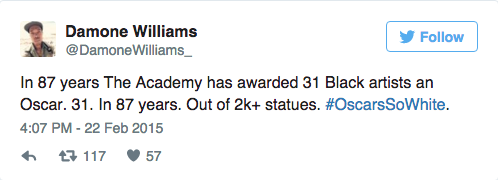
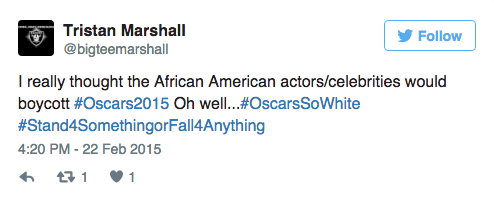
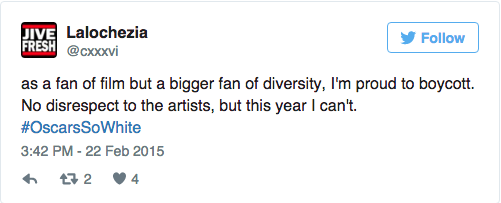
Viewers united and shared their disappointment and outrage for a system that fails to recognize the achievements of marginalized groups using #OscarsSoWhite. This is just one example of a counter-public sphere on social media. Subordinate groups are able to use social media platforms and multiscreening to meet away from the dominant group and discuss issues with like-minded people.
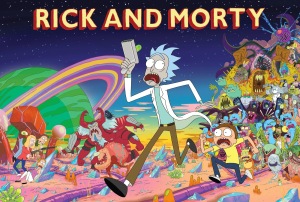
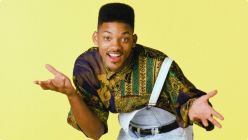 A common example of this phenomenon is Will Smith’s character in The Fresh Prince of Bel-Air. Born and raised in West Philadelphia, Will plays a troubled teenager who moves in with his upper-middle class family to find a better life. Viewers loved his kooky antics, supported him through his hardships, and stuck with him until the end.
A common example of this phenomenon is Will Smith’s character in The Fresh Prince of Bel-Air. Born and raised in West Philadelphia, Will plays a troubled teenager who moves in with his upper-middle class family to find a better life. Viewers loved his kooky antics, supported him through his hardships, and stuck with him until the end.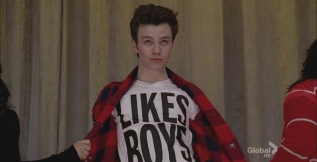 Or what about Glee? Many viewers watched Kurt, an openly gay teen, get bullied and harassed throughout his time at McKinley High School. The sympathy and attachment some people have to Kurt result in a broader acceptance of the LGBTQ community.
Or what about Glee? Many viewers watched Kurt, an openly gay teen, get bullied and harassed throughout his time at McKinley High School. The sympathy and attachment some people have to Kurt result in a broader acceptance of the LGBTQ community.